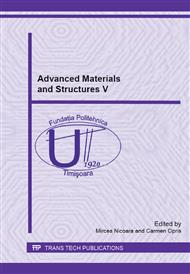p.210
p.216
p.222
p.226
p.233
p.239
p.243
p.249
p.255
Fabrication and Test of High-Temperature Ceramic Transformer
Abstract:
This work describes the fabrication and test of a high temperature (+200°C) capable high frequency transformer. It was manufactured using Low Temperature Co-fired Ceramic (LTCC) technology, which allowed the complex multilayer structure of ceramic and metal windings to be formed. However, the selected LTCC composition is a free sintering ceramic and there is an interaction between the metal conductor and the ceramic substrate during lamination and firing that can lead to significant deformation, presenting a significant engineering challenge. Here the fabrication process for the LTCC is described (screen printing, collation, lamination and firing) for a number of iterations of the transformer design, each of which was analysed for deformation and subjected to electrical tests. In addition a silicone adhesive for assembling the LTCC with the transformer was analysed for high-temperature performance. A test vehicle was assembled and it was subjected to 1000 hours at 210°C. Shear tests were performed at intervals to quantify the loss in bond strength over time. After a good solution for manufacture was found, a batch of transformers was produced, characterized and tested to demonstrate a high reproducibility and manufacturing yield.
Info:
Periodical:
Pages:
233-238
Citation:
Online since:
August 2014
Authors:
Keywords:
Price:
Сopyright:
© 2014 Trans Tech Publications Ltd. All Rights Reserved
Share:
Citation:


